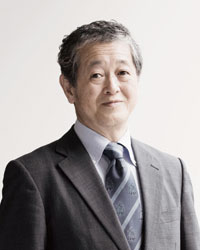Enabling Technology Project
E3 New Heat Resistant Materials for Low CO2 Emission Type Next-Generation Thermal Electric Power Generation
Outline of the area

Kohmei Halada
Emeritus Researcher,
National Institute for
Materials Science
42% of the global CO2 emission is caused by thermal electric power generation. In addition, since the amount of the thermal electric power generation which occupies 68% of the current total electric power in the world is estimated to increase 1.4 times over or more in 2040, it is strongly requested that a next-generation thermal electric power generation system of the low CO2-emission will be created.
Due to the law of thermodynamics, the thermal engine commencing with the gas turbine increases its electric power generation efficiency by operating at a high temperature thereby being an extremely effective means for decreasing CO2 emission. The largest factor limiting the operational temperature is heat resistant materials. It is indispensable to develop a new ultrahigh heat resistant material which complies with the requirement for the operation at high temperature and high efficacy in various methods such as coal-fired thermal power, natural gas-fired power and so on.
In this project, we will seek to further promote the ALCA R&D so far as follows: (a) materials allowing higher efficiency thermal electric power generation such as gas turbine at 1800°C and thermal electric power generation at 800°C, (b) ferrite heat-resistance steel for thermal electric power generation at 700°C, (c) recyclable Ni-based superalloy.
In this way, we establish a basis for the empirical research in collaboration with industry in 5-years and social implementation in 2030 as well.




